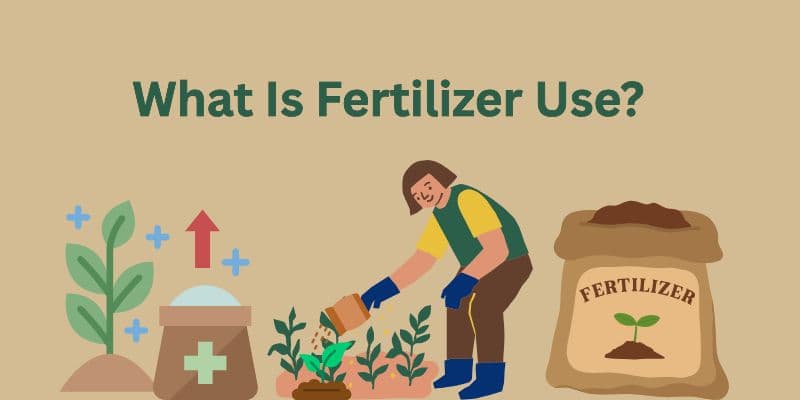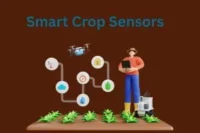Fertilizer Use: Nourishing the Soil, Securing the Future
Published: 19 May 2025
Fertilizers play a vital role in global food production, contributing to approximately 50% of the world’s crop yields, according to the International Fertilizer Association. As continuous farming depletes essential soil nutrients, replenishing them through fertilizers is necessary to maintain productivity. With the global population expected to reach nearly 10 billion by 2050, efficient and balanced fertilizer use is essential not just for higher yields, but for sustaining soil health and ensuring long-term food security.
So, guys, without wasting time, let’s jump into the article to learn the Fertilizer Use: Nourishing the Soil, Securing the Future
2. What Is Fertilizer Use?
- Fertilizer use refers to the application of nutrients to the soil or plants to enhance growth.
- These nutrients are essential for plant development, especially nitrogen (N), phosphorus (P), and potassium (K).
- Fertilizers can be organic (manure, compost) or synthetic (chemical blends).
- The goal: restore or boost soil fertility to support healthy, high-yield crops.

3. Why Fertilizer Use Is More Important Than Ever
- Global demand for food is increasing, but arable land is shrinking.
- Soil depletion and over-farming have left fields hungry for nutrients.
- Climate change is affecting natural nutrient cycles and crop resilience.
- Sustainable fertilizer use helps farmers grow more with less—feeding families and futures.
4. Types of Fertilizers:
- Organic Fertilizers
- Derived from natural materials like compost, manure, and bone meal.
- Improve soil structure and long-term fertility.
- Eco-friendly but slower in releasing nutrients.
- Inorganic (Synthetic) Fertilizers
- Chemically manufactured; provide immediate nutrient availability.
- Fast-acting and yield-boosting but can harm soil if overused.
- Easy to apply and widely available.
- Biofertilizers
- Contain live microorganisms that promote nutrient uptake.
- Enhance soil health and reduce the need for synthetic inputs.
- Sustainable and especially beneficial for smallholder farms.
5. Emotional Impact of Improper Fertilizer Use
- Overuse leads to soil degradation, polluted water, and wasted investment.
- Underuse can result in poor yields, plant stress, and food insecurity.
- Many farmers feel pressure—balancing short-term gains with long-term soil health.
- One wrong decision can cost an entire season’s work and hope.
- Fertilizer isn’t just about crops—it’s about feeding families, securing livelihoods, and building futures.
6. How to Use Fertilizers the Right Way
- Soil Testing First
- Always test soil to understand its nutrient needs.
- Prevents over-application and saves costs.
- Choose the Right Fertilizer
- Match nutrient content with crop requirements.
- Consider environmental impact and crop stage.
- Timing and Dosage Matter
- Apply at the right growth stage for maximum absorption.
- Follow recommended application rates.
- Application Methods
- Broadcasting, side-dressing, foliar feeding, or fertigation.
- Use precision farming tools for efficiency.
- Monitor and Adjust
- Track plant health and adjust practices season to season.
- Sustainable fertilization is a learning process.
7. Fertilizer and Sustainable Farming
- Fertilizers, when used wisely, support sustainable agriculture.
- Balanced use helps maintain long-term soil productivity.
- Reduces pressure on land by increasing per-acre yield.
- Supports climate-resilient farming by strengthening plant resistance.
- Integrates with crop rotation, cover cropping, and organic practices.
8. Myths and Misconceptions
- “More fertilizer = more yield” – Not always true; overuse can harm.
- “Only chemical fertilizers work” – Organic and biofertilizers are powerful too.
- “Fertilizer ruins the environment” – Misuse does, but smart use protects it.
- “It’s too expensive to use quality fertilizers” – The cost of poor yields is higher.
The Farmer’s Reality: Between the Soil and the Sky
- Fertilizer decisions are not made in labs—they’re made in the field, with limited resources and high risks.
- A poor yield can mean missed school fees, empty plates, or debts.
- Every handful of fertilizer carries weight—of expectation, responsibility, and hope.
- Smart use turns that pressure into power
FAQs about Fertilizer Use
Here are some of the most frequently asked questions about the Fertilizer Use: Nourishing the Soil, Securing the Future
Fertilizer provides essential nutrients that help plants grow strong and produce higher yields.
Organic, inorganic (chemical), and biofertilizers—all offering different benefits.
Start with a soil test, then match the fertilizer to your crop’s specific nutrient needs.
Yes, if overused. Responsible application protects both crops and ecosystems.
At key growth stages like planting and flowering, depending on the crop.
Final Thoughts:

- Be Respectful
- Stay Relevant
- Stay Positive
- True Feedback
- Encourage Discussion
- Avoid Spamming
- No Fake News
- Don't Copy-Paste
- No Personal Attacks

- Be Respectful
- Stay Relevant
- Stay Positive
- True Feedback
- Encourage Discussion
- Avoid Spamming
- No Fake News
- Don't Copy-Paste
- No Personal Attacks





